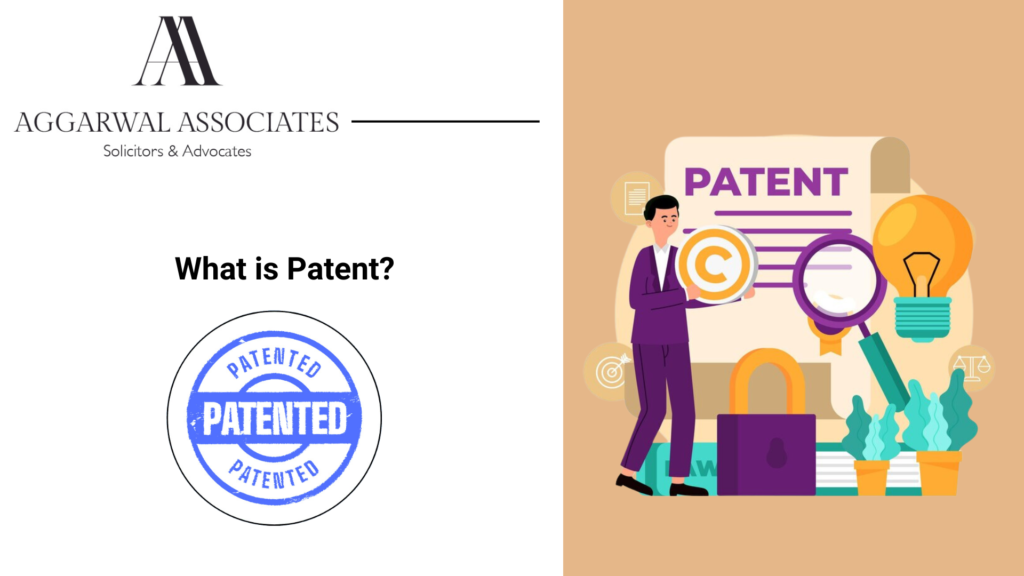What is a Patent?
Patent Overview
Imagine creating a groundbreaking invention that could change lives—wouldn’t you want to protect it? A patent is your safeguard, granting exclusive rights to your innovation and ensuring others can’t copy, sell, or use it without permission.

In this blog, we’ll explore what patents are, their importance, types, and how they work to protect creativity and innovation.
What is a Patent?
A patent is a legal document that grants inventors exclusive rights to their inventions for a specified period. These rights prevent others from making, using, or selling the invention without permission. Patents play a critical role in encouraging innovation by rewarding creators with control over their ideas.
For instance, if you invent a unique machine, a patent ensures that no one else can manufacture or sell it without your consent.
Importance of Patents
Patents are vital for protecting and fostering innovation. Here’s why they matter:
- Safeguarding Innovation: Inventors can protect their ideas from being copied.
- Encouraging Investment: Secure rights attract investors to fund new technologies.
- Driving Economic Growth: Patents help businesses build a competitive edge in the market.
- Promoting Knowledge Sharing: Inventors disclose technical details, contributing to societal progress.
Types of Patents
Patents fall into three main categories:
- Utility Patents: Cover functional inventions like machines, processes, or compositions of matter.
- Design Patents: Protect the ornamental design of a functional item.
- Plant Patents: Safeguard new plant varieties that are asexually reproduced.
Each type serves a specific purpose, ensuring comprehensive protection for different kinds of innovations.
What Can Be Patented?
To qualify for a patent, an invention must meet three key criteria:
- Novelty: The invention must be unique.
- Usefulness: It must serve a practical purpose.
- Non-Obviousness: The invention should not be an obvious improvement over existing solutions.
Examples of patentable items include medical devices, new chemical compounds, and innovative software systems. However, ideas, natural phenomena, and abstract concepts cannot be patented.
How to Obtain a Patent
Securing a patent involves several steps:
- Conduct a Patent Search: Ensure your invention is unique.
- Prepare an Application: Include detailed descriptions, drawings, and claims.
- Submit the Application: File with the relevant patent office, such as the USPTO or IPO.
- Examination Process: Patent examiners review your application for eligibility.
Hiring a patent attorney can simplify this complex process and improve your chances of approval.
Duration of a Patent
Patents offer protection for a limited period:
- Utility Patents: Up to 20 years from the filing date.
- Design Patents: Generally 15 years from the date of grant.
- Plant Patents: Typically 20 years from the filing date.
After expiry, the invention enters the public domain, allowing anyone to use it freely.
Patent Infringement and Enforcement
Patent infringement occurs when someone uses a patented invention without permission. Common examples include unauthorised production or selling of a patented product.
If infringement happens, the patent holder can take legal action to:
- Stop the unauthorised use.
- Claim financial compensation for damages.
- Protect their market position.
Patents in Different Jurisdictions
Patents are territorial, meaning they only offer protection in the country where they are registered. If you need global protection, you can:
- Use the Patent Cooperation Treaty (PCT) to simplify international applications.
- Register patents in multiple regions like Europe (EPO) or India (IPO).
Benefits of Patents
Owning a patent provides numerous advantages:
- Exclusive Rights: You control who uses your invention.
- Revenue Generation: Licensing patents can create new income streams.
- Competitive Advantage: Protects your market position by blocking competitors.
Patent vs Copyright vs Trademark
Patents are one of three major forms of intellectual property:
- Patents: Protect inventions and technical innovations.
- Copyrights: Safeguard creative works like books and music.
- Trademarks: Protect brand identifiers like names, logos, and slogans.
Patents in the Digital Age
The rise of digital technologies has transformed innovation and patent protection. Emerging areas like artificial intelligence, biotechnology, and blockchain are challenging traditional patent laws. Businesses must adapt to secure patents for these cutting-edge inventions.
Importance of Consulting a Patent Attorney
Here is the importance of consult a Patent Attorney:
- 🔍 Expert Patent Search – Ensures your invention is unique and eligible for a patent.
- 📜 Accurate Application Drafting – Crafts precise, legally sound patent applications.
- ⚖️ Legal Guidance – Navigates complex legal procedures and compliance requirements.
- 🛡️ IP Protection – Safeguards your intellectual property from infringement.
- 🚀 Increases Success Rate – Boosts the chances of patent approval.
- 💼 Handles Objections & Disputes – Manages rejections, objections, and legal challenges.
- 💰 Cost & Risk Reduction – Helps avoid costly errors and potential legal battles.
Looking for Patent Attorney? Patent Law Firm in India | Patent Law Firm in Delhi
Conclusion: What is a Patent?
A patent is more than a legal document—it’s a tool that empowers inventors, fosters innovation, and drives economic growth. Whether you’re an entrepreneur or a researcher, understanding patents can help you protect your ideas and maximise their potential.
Need help with patents? Consult Aggarwal Associates for expert guidance on securing and managing your intellectual property.
FAQs: What is a Patent?
A patent is a legal right granted to an inventor, giving them exclusive control to make, use, or sell their invention for a set period of time.
To protect inventions and grant exclusive rights to inventors.
No, only tangible inventions or processes can be patented.
The process can take 1-3 years, depending on complexity and jurisdiction.
No, patents are territorial and must be registered in each country for protection.
Yes, patents can be sold or licensed to generate revenue.
